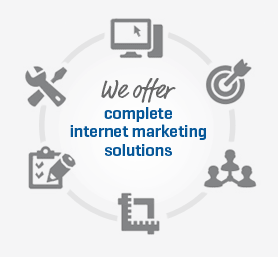Don’t Forget About Bing!
When I talk to clients about paid search & SEO, most people seem to have a one-track mind, and are entirely focused on Google. Obviously Google is the dominant search engine, but if you ignore Bing (particularly when it comes to paid search), you’re missing out.
If you advertise with AdWords, there’s really no reason you shouldn’t have a Bing Ads account. It’s the exact same type of advertising and the platforms are very similar. Since 2010, Bing & Yahoo! have teamed up giving advertisers the ability to advertise on both search engines through a single platform, thus allowing them to be a more formidable competitor to Google.
Here are the top reasons you should consider a Bing Ads account:
LESS EXPENSIVE
By less expensive, I’m not talking about the fact that your monthly bill with Bing will be less than it is with Google – that’s an obvious point given that Google has a much larger market share. From our experience managing campaigns on Google vs. Bing, the average cost per click is generally about 15-20% less on Bing than it is on Google for the exact same keywords. The quality of the traffic is the same as well. So this will generally lead to a lower average cost per lead – and that’s a pretty important metric.
EASY TO SET UP
With Bing’s import tool, it’s really easy to import your existing PPC campaign from Google, so there’s no excuses in that respect. As of June 2014 Bing has introduced URL auto-tagging, which cuts down on the amount of work to be done if you want to properly keep track of your campaigns in Analytics.
GREAT FOR SMALL ACCOUNTS LIMITED BY BUDGET
If you’re a small business, and you have a limited and fixed budget it becomes increasingly important to take advantage of Bing. Let’s look at the following example…
Say you have a PPC budget of $500, and currently, you just have a Google AdWords account. Across your account, you have an average cost per click of $1, and historically, your conversion ratio is 5%. This would produce 500 clicks per month and 25 leads/conversions, resulting in a cost per conversion of $20. However, you notice in your AdWords account that you’re limited by budget to the tune of 30%. Now, assuming it’s profitable for you to pay $25 for a conversion, logic would dictate that you’d want to increase your AdWords budget to maximize your traffic & leads, but sometimes it doesn’t work that way and you operate with a fixed budget. If that’s the case, my recommendation to clients is generally that we import the Google campaign to Bing and max out everything that we can get from Bing before investing $1 into Google.
So let’s look at the second example where we’re splitting the budget between Google & Bing…
Based on historical precedent, we’ll assume that we can achieve an average cost per click of $0.85. In Canada, Bing + Yahoo!’s market share will generally be in around 12% or so. Assuming identical clickthrough rates on Google & Bing, we may max out at about $85/month on the Bing Ads advertising. Assuming the same conversion ratio, this would produce the following key performance indicators:
Clicks – 100
Conversions – 5
Cost per Conversion – $17
This would leave us with $415 to still spend on Google, which should produce the following key performance indicators:
Clicks – 415
Conversions – 21
Cost per Conversion – $19.76
Whereas our cost per conversion when we were only advertising with Google was $20, the blended cost per conversion is now $19.23.
Truth be told, whenever looking at a statistically significant sample size with our own clients, Bing has always beat Google. In extreme examples where we’re working with a client with a severely limited budget and keywords with very high average CPCs on Google, we’ve put them entirely on Bing and completely cut out Google.




